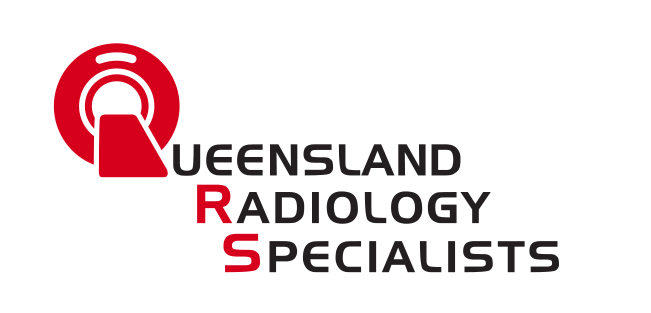Radiology plays a pivotal role in modern healthcare and offers precise and reliable insights into the human body’s internal workings. Early detection in radiology is a critical part of preventive medicine, helping doctors find and treat diseases early, ultimately improving patient outcomes
By using advanced technology, radiology services allow healthcare professionals to diagnose conditions more accurately, often before any symptoms appear. This article looks at the important tools and methods used in radiology for early detection and how they can play a crucial role in saving lives.
Importance of Early Detection in Healthcare
Early detection is the process of identifying diseases or abnormalities at an initial stage when they are most treatable. This approach is important in combating conditions like cancer, cardiovascular diseases, and neurological disorders. Timely diagnosis often leads to better treatment outcomes, reduced healthcare costs, and improved patient quality of life.
Radiology services are crucial for early detection. They provide medical imaging and diagnostic tools that allow physicians to visualise internal organs, tissues, and structures. This enables doctors to make quick and informed medical decisions.
Key Radiology Tools for Early Detection
1. X-ray Imaging
X-ray imaging is a widely used and accessible tool used in radiology. It uses electromagnetic radiation to take pictures of the inside of the body, which helps detect fractures, infections, and lung issues like pneumonia or tuberculosis.
X-rays also play an important role in spotting bone disorders such as osteoporosis and arthritis. They can reveal early changes in bone density and joint alignment. Recognising these early signs allows for timely treatment, which can stop the condition from getting worse.
Overall, X-ray imaging is a crucial tool for both routine check-ups and emergencies
2. Computed Tomography (CT) Scans
CT scans represent a significant advancement in diagnostic imaging, using a series of X-ray images combined with computer processing to create detailed, cross-sectional images of the body. This technology is critical in the early detection of cancers, vascular conditions, and internal injuries.
CT scans can reveal minute abnormalities, such as small tumours or blood clots, which may not be detectable in standard X-rays. By providing detailed images of organs, bones, and soft tissues, CT scans help healthcare providers diagnose conditions at a much earlier stage, which increases the chances of successful treatment.
3. Magnetic Resonance Imaging (MRI)
MRI technology provides a non-invasive method to capturing high-resolution images of soft tissues and organs. It uses strong magnets and radio waves to create clear pictures of the brain, spinal cord, muscles, and joints. These images help doctors find neurological disorders, musculoskeletal injuries, and cancers.
MRIs are safer than X-rays and CT scans because they do not use ionising radiation. This makes them a good choice for patients who need a lot of imaging, like those receiving cancer treatment or managing chronic conditions. MRIs are especially effective in identifying early-stage conditions that other imaging techniques might miss.
4.Ultrasound Imaging
Ultrasound imaging uses sound waves to create real-time images of internal organs and soft tissues. It is often used to monitor pregnancies but can also help detect conditions in the abdomen, thyroid, heart, and blood vessels.
Ultrasound provides immediate results without requiring invasive procedures. Because it does not use radiation, ultrasound is a safe and effective way to screen for and monitor chronic conditions, particularly in high-risk groups.
5. Mammography
Mammography is a specialised form of X-ray imaging used to detect early signs of breast cancer. It can identify microcalcifications, abnormal tissue changes, or dense areas that may indicate the presence of a tumour.
Regular mammograms can significantly reduce the risk of dying from breast cancer by detecting it when it is most treatable. New technology, like digital mammography, improves image quality, makes more accurate diagnoses and intervenes early.
Emerging Technologies in Radiology
Radiology is evolving rapidly because of new technology that enhances the accuracy and accessibility of diagnostic scans. Some important innovations include:
Artificial Intelligence (AI)
AI is revolutionising radiology services by enhancing image analysis and interpretation. Machine learning programs quickly find patterns and problems in imaging studies. This helps radiologists detect issues earlier and more accurately.
3D Imaging and Printing
Three-dimensional imaging technologies provide a more comprehensive view of anatomical structures and aids in the planning of complex surgeries. In some cases, 3D printing can create physical models of detected abnormalities for surgical preparation.
Molecular Imaging
This approach combines traditional imaging with biological markers to visualize molecular processes in the body. It is particularly valuable in detecting cancer at a cellular level, well before it forms visible tumours.
How Radiology Enhances Preventive Care
Preventive care focuses on keeping people healthy and stopping diseases before they happen. Radiology is important in this approach because it provides tools for regular screenings and monitoring of people who are at higher risk.
For instance, diagnostic scans like CT colonography can detect early signs of colorectal cancer, while low-dose CT scans are used to screen for lung cancer in smokers. Similarly, regular mammograms for women above 40 and bone density scans for older adults can catch potential issues before they progress.
The Vital Role of Early Detection in Radiology
Early detection in radiology is crucial in modern medicine. It offers great opportunities to diagnose and treat diseases early, saving many lives each year. Tools and technologies, from basic X-rays to advanced AI-driven imaging, are constantly improving.
Collaboration between patients, radiologists, and healthcare providers is crucial. By ensuring regular screenings and making the most of medical imaging, we can work toward a future where early detection is standard. This will reduce disease impact and improve the quality of life for everyone.
If you’re ready to take charge of your health, contact Queensland Radiology Specialists. Their skilled team offers advanced diagnostic imaging services to aid in early detection and achieve the best health outcomes.Schedule an appointment and prioritise your well-being today!



